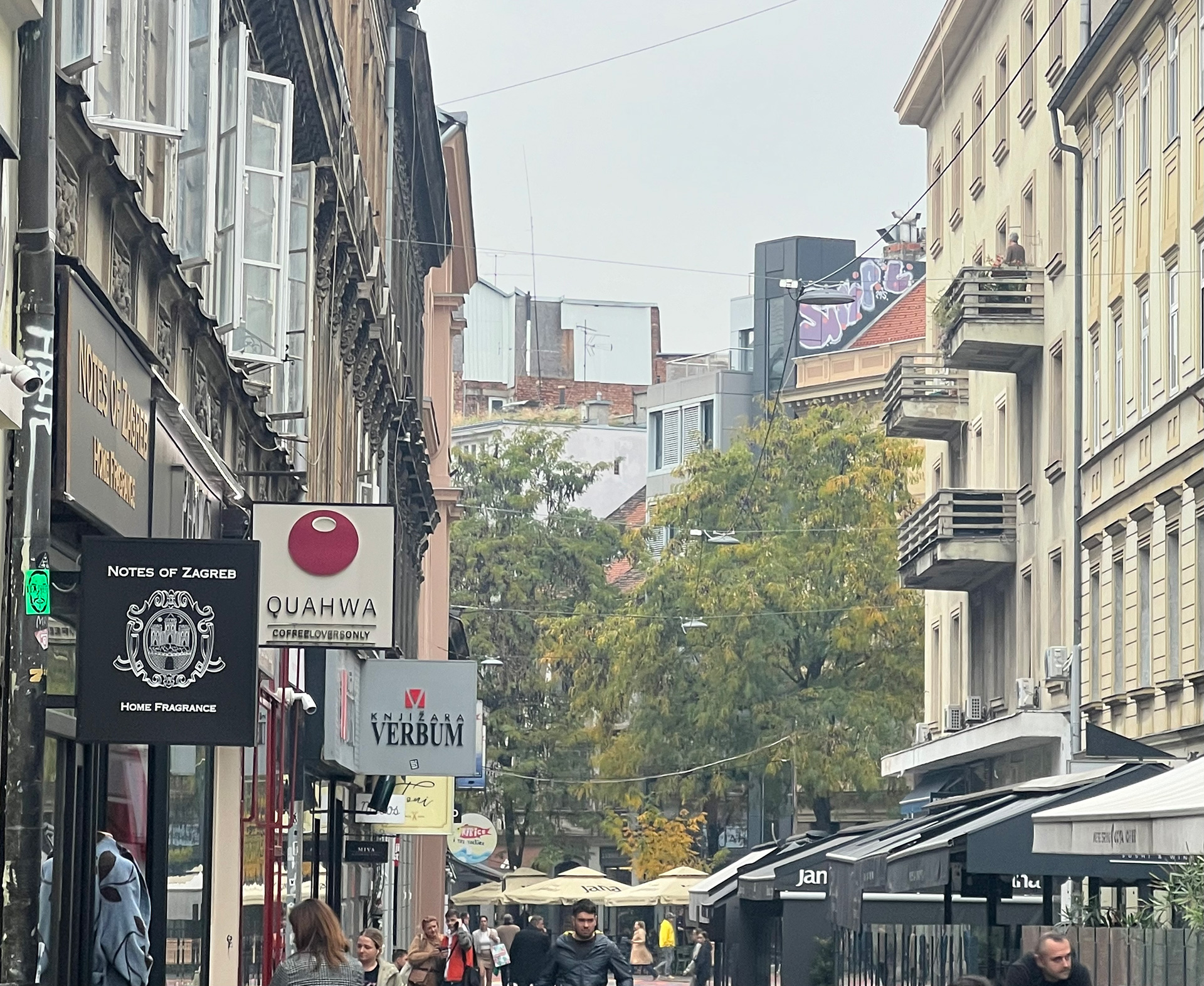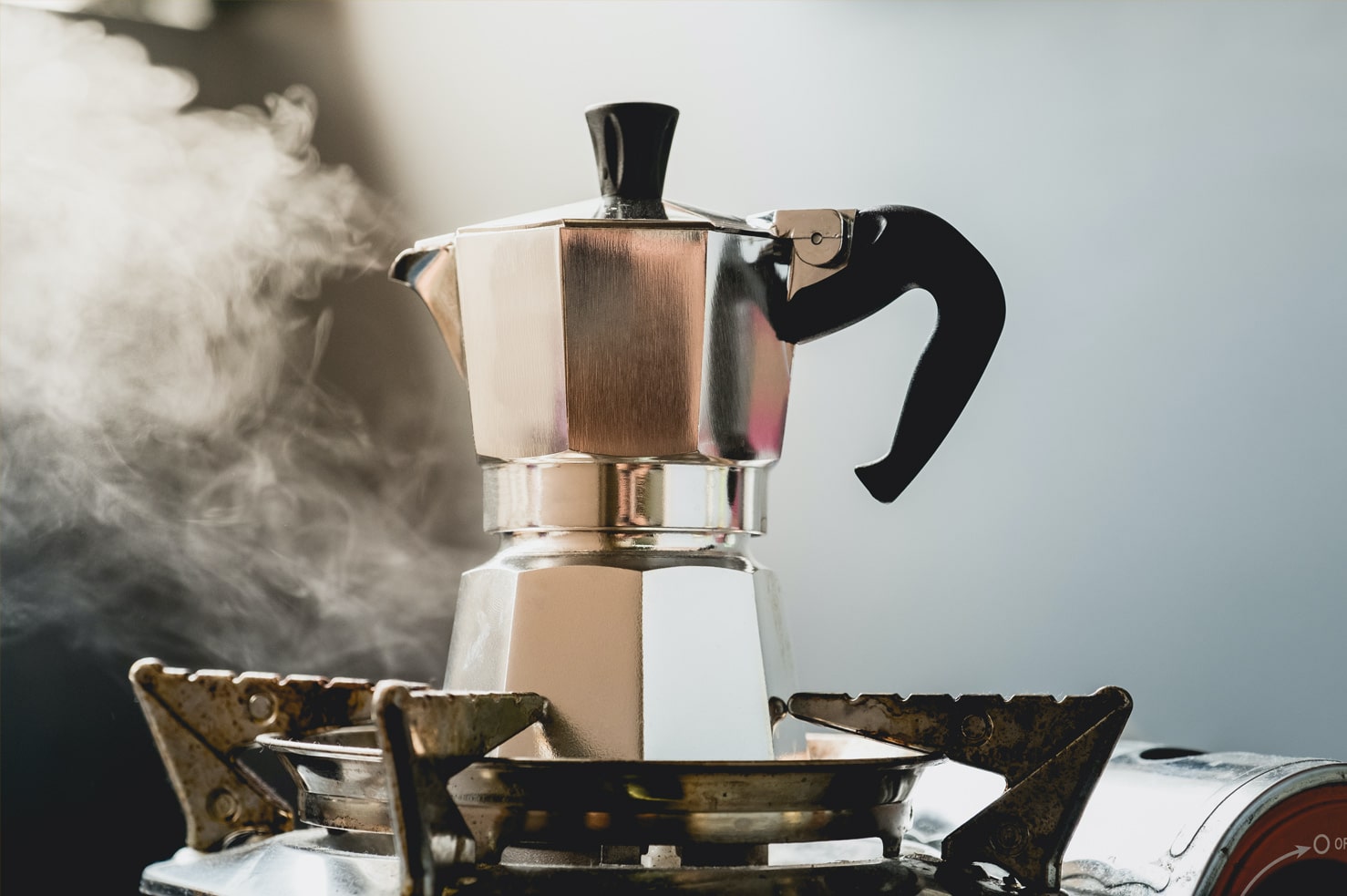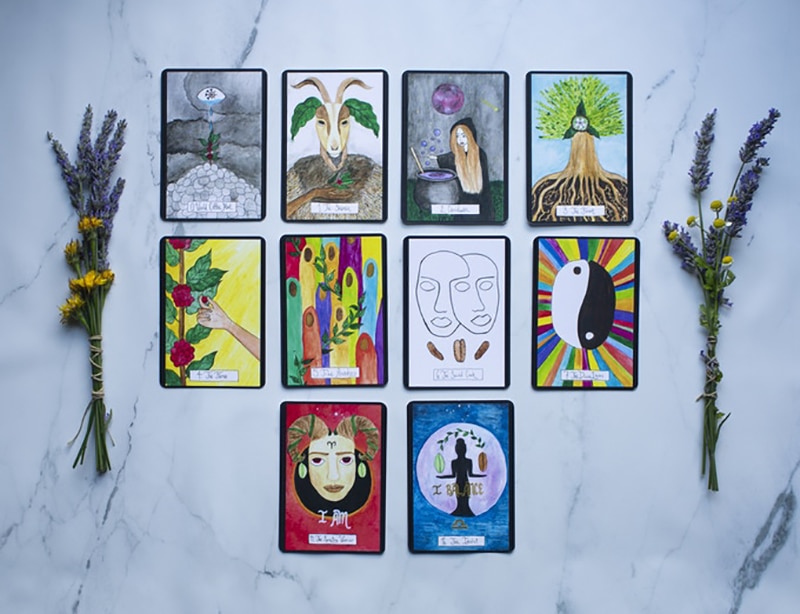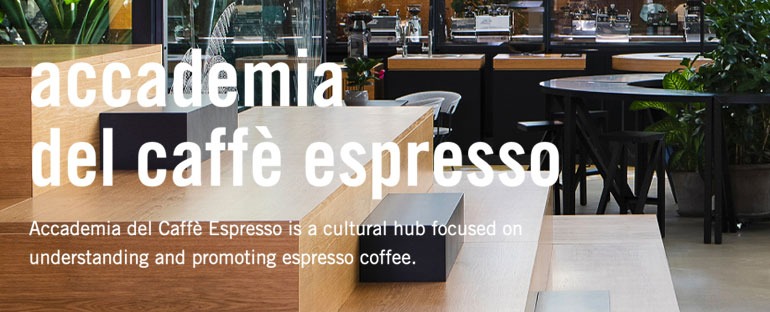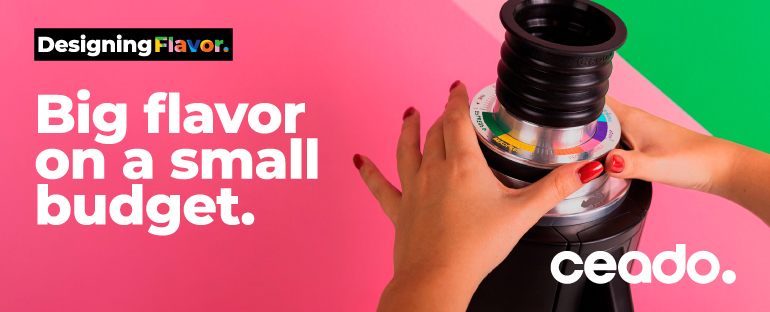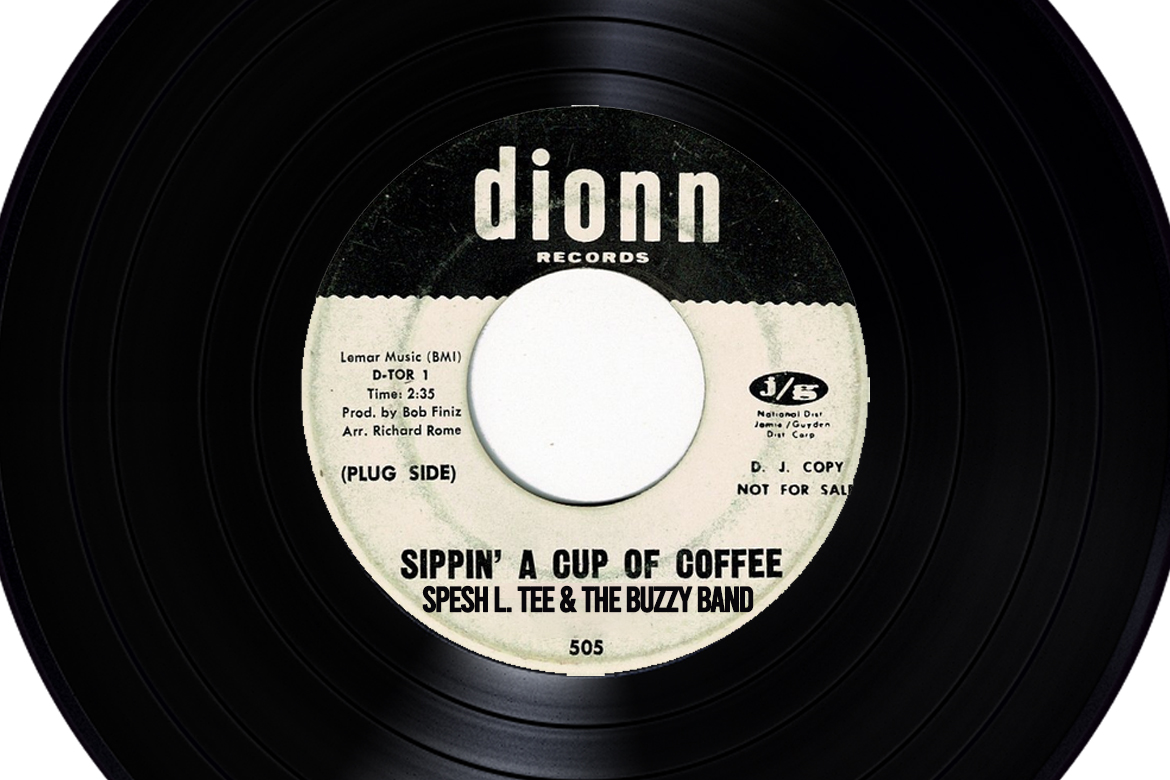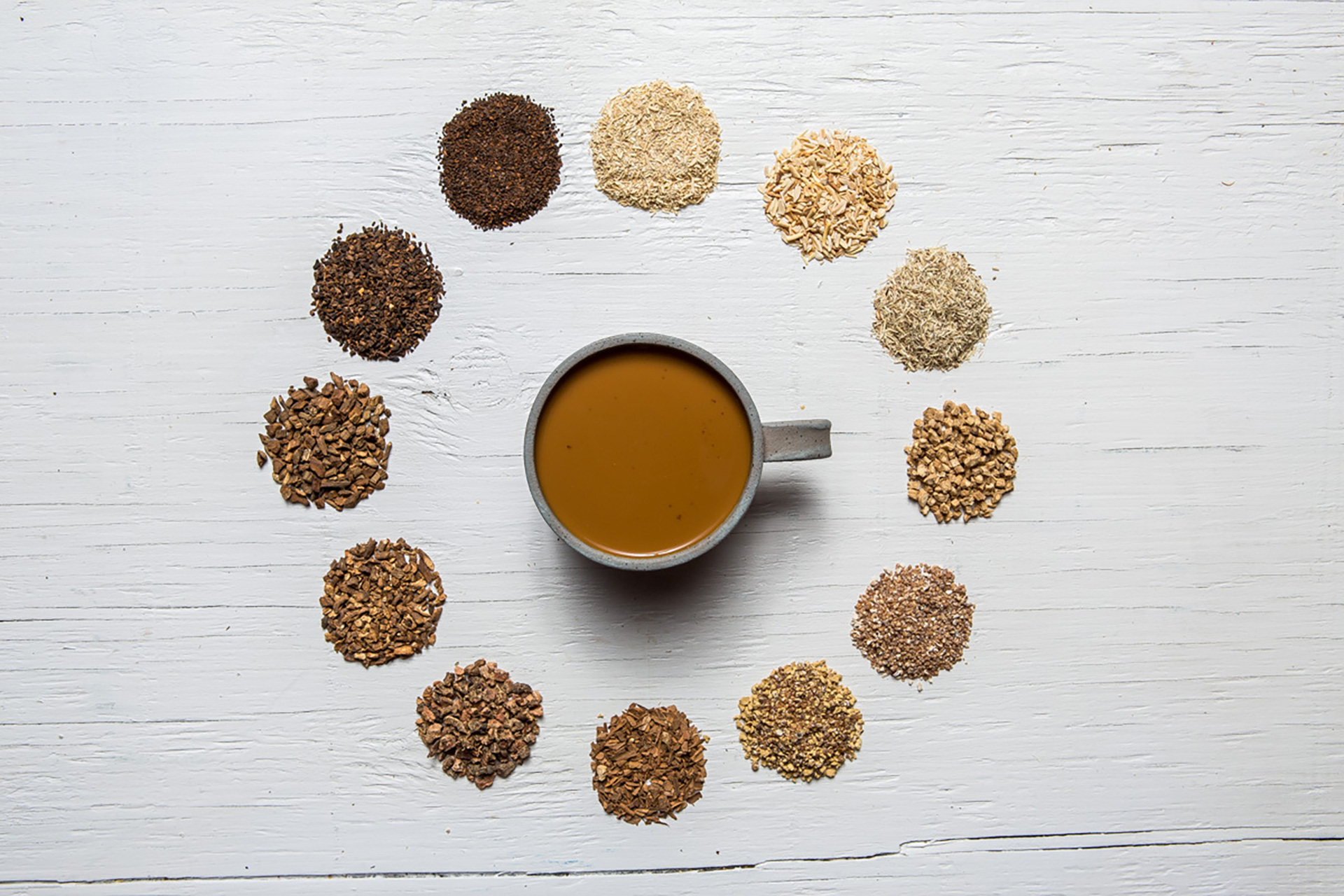Coffee may not be an Italian invention, but the country’s love affair with the beverage runs deep. 80% of Italians drink coffee, with the average person consuming 1.5 espresso-based drinks a day. And there’s no shortage of choice for where to get one because Italy is home to around 149,000 bars, cafes, and coffee shops slinging espresso (many for just €1.00 a shot).
So when the country shut down every single restaurant, pub, and apero lounge and standing bar in the country for 68 days between March and May of 2020, the greatest loss of normalcy for many people was the daily caffè at the local bar. And as of November 2020, coffee bars in Italy’s “red zones” of high contagion are closed again. In these trying times, allowed outside only for weekly trips to the supermarket or pharmacy, homebound Italians have rekindled an old love affair in search of a sense of solace. I am of course referring to the Moka pot.
The eight-sided aluminum Moka pot is simple and durable—and highly recognizable. Even if you don’t have a Moka pot, you’ve surely seen one. Available in a variety of sizes for brewing anywhere from one to ten cups at a time, it sits directly on the stovetop. The base gets filled with water, and a small basket of ground coffee is placed just above the surface. The upper chamber is screwed onto this bottom, which is then placed overheat. As the water rises to a boil, it brews the coffee, which then passes through a filter and a spout into the upper chamber. The result is a strong, espresso-like coffee that can easily be made at home.
The iconic coffee maker was created by Italian engineer Alfonso Bialetti in 1933 but didn’t really take off until the 1950s when Bialetti’s son Renato honed in on its potential. Bialetti the junior decided to redirect the production line at the family’s kitchenware factory to create only one item: the Moka Express.
The Moka’s first massive popularity surge came at a moment when Italy’s economy was struggling, and regular Italians were cutting out luxuries like a simple espresso at the bar. With an estimated 200 million sold since its invention, most Italian homes—around 70%—have at least one Moka pot hanging about. Almost bankrupted by the popularity of capsule coffeemakers in 2018, Bialetti managed to recover and survive to brew another day. So when the 2020 lockdown snatched away the tradition of coffee (and a chat) at the counter, Italians once again turned to the trusty Moka.
Before the national shutdown, Linda Fiumara, a teacher and travel writer, had a 50-minute commute to her job near Milan, so the first caffè of the day was an essential espresso at the bar early in the morning. But instead, during the lockdown, the Moka became what she calls “a true gift during a difficult moment.”
“Working from home meant more time to enjoy breakfast,” she tells me. “Most importantly, it meant I could start the day with my partner. In the quiet time of the lockdown, it was a coffee that came from the heart. That experience has completely changed my relationship with the Moka,” says Fiumara.
Fabio Dotti, Italian Cup Taster Champion 2020 and World Espresso Italiano Champion 2017, sees the return to the Moka during Italy’s extended lockdown as driven by the extra time at home and the desire “perhaps, to relive that unmistakable emotion of enjoying a coffee together, as we once did.”
Sophie Minchilli, who leads food tours around her native Rome as well as throughout other regions of Italy, agrees. When she found herself quarantining in the Umbrian countryside, the rural setting and strict rules on outings meant her usual coffee and chat at the bar were impossible.
“I actually normally only drink coffee at the bar, because for me, drinking coffee is more about the experience,” Sophie admitted. “I have a Moka at home, but I barely use it. So, during the national closures, I definitely used it more. I usually have four coffees a day—which means my Moka got a lot of love in lockdown!”
The switch to home brewing during the national quarantine was notable. E&B Lab, which crafts coffee makers and creates an artisan Moka-style pot, has already noted a 40% increase in Moka sales between January and October 2020 compared to all of 2019. Bialetti was not able to share lockdown sales figures with Sprudge, but did note that consumption of homemade coffee is expected to stay higher than usual as many Italians continue to work remotely and social distance. Perhaps at least partially linked to the surge in stovetop coffee-making, in October, Bialetti also released “Perfetto Moka,” a packaged coffee toasted and ground specifically for the Moka pot.
Some of Italy’s specialty roasters, including Agust, where Dotti heads training programs at Agust Academy, saw a rise in demand for Moka-specific roasts during the lockdown. While Dotti notes that espresso is as Italian as, well, Italians, and people have already returned to drinking it out, the requests for Moka coffee haven’t stopped. As a result, Agust is adding a Moka roast to their product line up to launch later this year. Traditional Moka coffee is a medium-dark roast blend of Arabica and Robusta, which has contributed to the Moka’s bitter reputation, but Agust believes the little stovetop coffee maker deserves better. Agust’s Moka coffees are a range of medium-light roast, single origin, and 100% Arabica. The result is a sweeter and more aromatic cup with a mellowed out acidity.
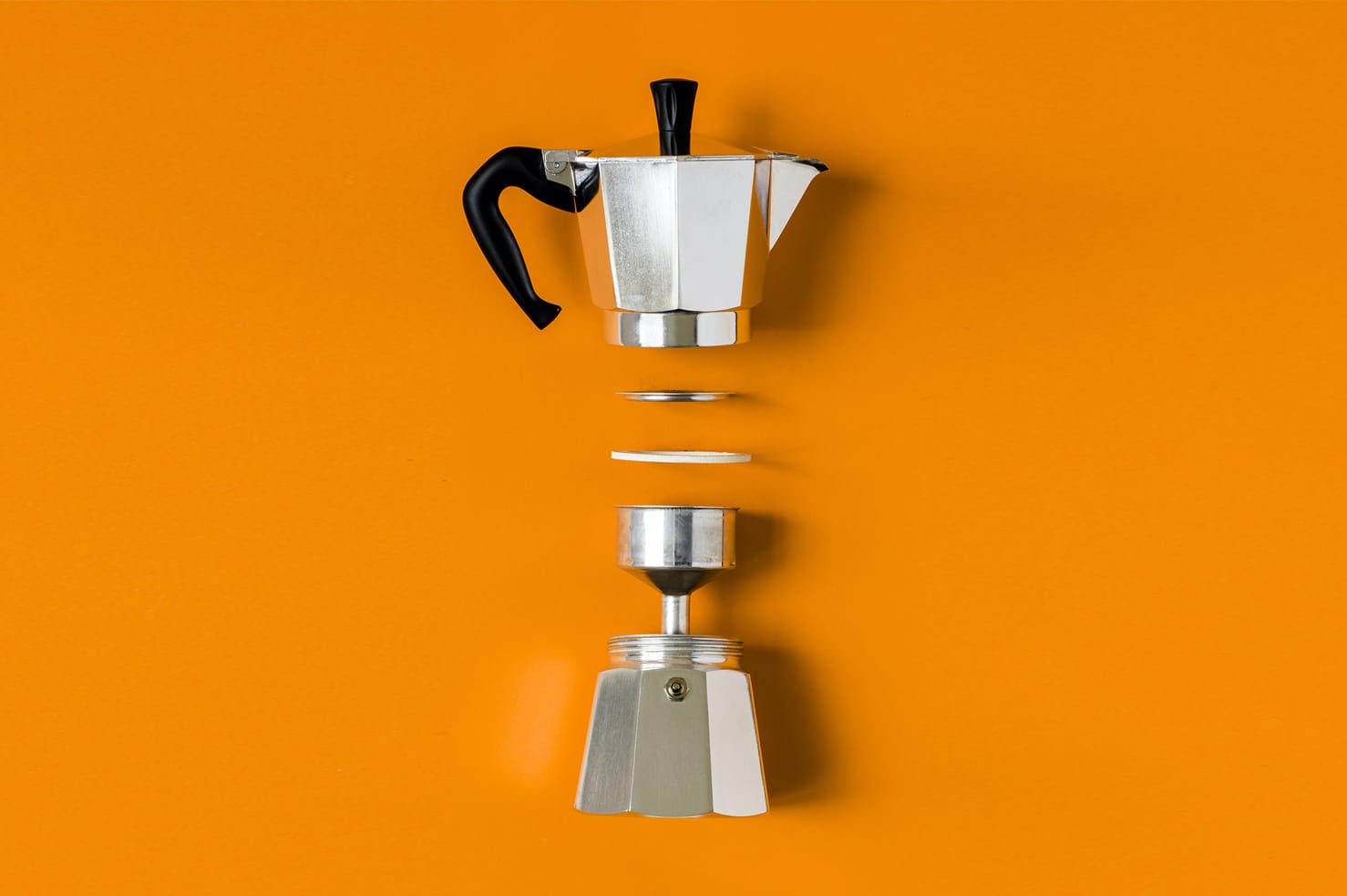
The Moka’s quarantine revival may have been driven by both necessity and nostalgia, but the little metal pot is capable of making a great cup of coffee. Dotti shared some tips with Sprudge on how to make the best possible coffee in a Moka, national lockdown optional.
- First, the Moka needs to be as clean as possible. And if you have an aluminum pot, always be sure to wash it by hand rather than in the dishwasher.
- Dotti recommends using water that preferably that matches the following characteristics: Total Dissolved Solid (TDS) at 180°C 50-175mg/l, Alkalinity 40-75mg/l, pH 6.5-8.0, Total hardness 50-175ppm—or just a good bottled (not distilled) water.
- Measure 1g of coffee for every 10g of water, which corresponds roughly to filling the bottom of the Moka to just under the pressure valve. Once filled, place the water chamber on the stove to preheat to between 45 and 55°C.
- While waiting for the water to heat, fill the basket with coffee ground right between a grind for espresso and filter coffee. As you place the coffee in the basket, avoid making a little mound or tamping the coffee down; simply fill it level to the top.
- Place the coffee basket in the water chamber and screw on the upper chamber, leaving the cover open. Turn up the flame as high as it will go without exceeding the diameter of the Moka. The coffee should start to rise very quickly and as soon it speeds up, creating bubbles and a lighter color, close the cover and immediately remove the Moka from the flame.
Finally, mix the coffee inside the Moka with a spoon and serve. Be sure to enjoy it, and remember: go back and wash your Moka after the moment has passed. For readers interested in learning more, or keen to practice their Italian, you can see Dotti’s demonstrating the technique while at home during his own lockdown in Brescia here.
Natalie Kennedy is a California-born, Italian-based travel writer and the publisher of An American In Rome. Read more Natalie Kennedy on Sprudge.












